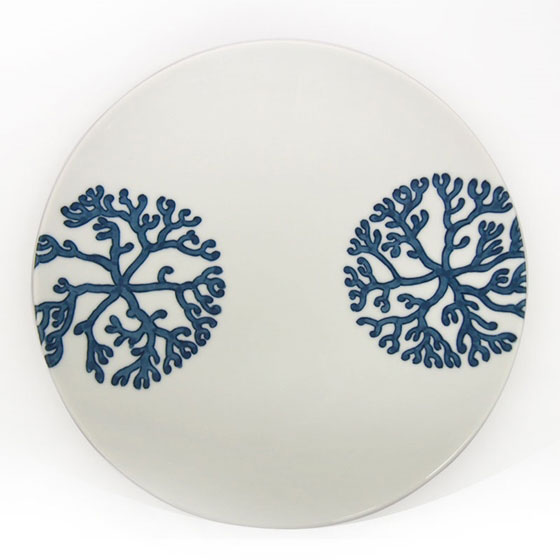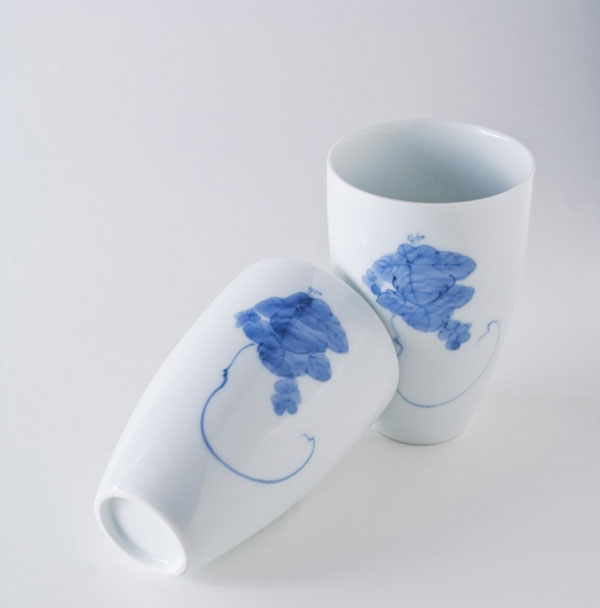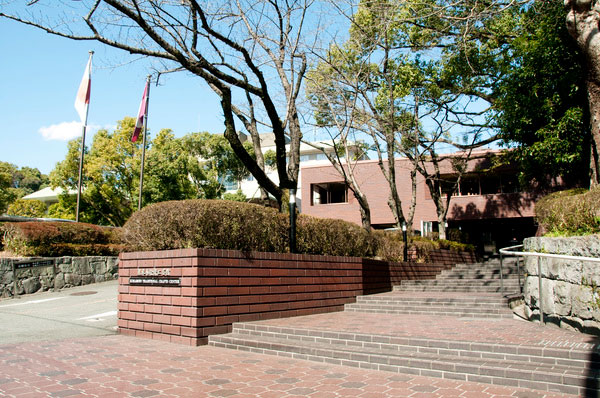 Photo:Kumamoto Prefectural Traditional Crafts Center
Photo:Kumamoto Prefectural Traditional Crafts Center
- Ceramic
- Kumamoto
Amakusa ceramics Amakusa tojiki
Original ceramic and porcelain
Charming modern designs
Description
What is Amakusa ceramics ?
Amakusa ware (called Amakusa Tojiki in Japanese) is a form of pottery or porcelain baked in the Amakusa region of Kumamoto prefecture. The name was newly applied when the craft was designated as a national traditional craft. In Amakusa, where high quality pottery stone is produced, ceramics and porcelain have been baked for a long time, and the area is still known as the home of ceramics. Amakusa porcelain is recognized for being beautifully clear and white. On the other hand, Amami clay pottery has a simple texture and individuality. One of the four main kilns, Takahama ware, uses high purity porcelain stone with modern coloring that combines transparent whiteness with the deep indigo blue of asbolite. Uchida-sarayama ware produces white porcelain, celadon porcelain and blue and white porcelain called sometsuke where cobalt pigment is used to draw patterns and turns deep blue by firing. Mizuno-daira ware, which is said to be the origin of the dark blue glaze called namako (sea cucumber) glaze, has unique picture patterns and a lovely glossiness. Maruo ware has a characteristically simple texture using red clay collected around the Maruogaoka area and various items, mainly tableware, as well as vases and pots are baked.
History
 Photo:Kumamoto Prefecture
Photo:Kumamoto Prefecture
According to written records, Amakusa ware was already being baked when porcelain stone was discovered around the year 1650. During the early and middle years of the Edo period (1603-1868), Amakusa was under direct control of the shogunate, or feudal military government, and villagers on the island supported themselves by baking ceramics and porcelain.
Large quantities of high quality porcelain stone is produced on Amakusa and old documents show that porcelain was being baked in the Uchida-sarayama area in 1676. There is also documentation recording that porcelain production started in the village of Takahama in 1762 and Mizunodaira ware was established in Mizuno-daira (now the city of Hondo) on Amakusa in 1765.
Unique various techniques and production methods that are still in use today have been passed down over generations. Amakusa ware was designated as a national traditional craft in 2003. Today, there are eleven pottery kilns that continue to produce a wide range of ceramics that match modern living while maintaining tradition.
General Production Process
- 1. Elutriation
Various forms of pottery and porcelain are produced in Amakusa using quality porcelain stone and potter’s clay collected locally. The following are the steps for producing porcelain. First, the mined Amakusa porcelain stone is finely ground. After adding water and stirring, the mixture is moved to a precipitation tank, where pebbles and grit settle on the bottom and the muddy water is sieved. The mixture is then moved to another tank while removing iron content with an iron remover. This process is called elutriation.
- 2. Dehydration
Clay slip, which has settled at the base of the mud tank after removing iron, is poured into an unglazed ceramic or plaster pot. The slip is left like this until the moisture is gone and becomes clay.
- 3. Rough kneading
The original soil that has become clay is kneaded with feet to remove air pockets. This process makes the firmness of the clay even.
- 4. Storing and curing
The clay is stored and cured in a cool, dark place with high humidity. The clay is matured with organic bacteria in order to increase its viscosity and moldability.
- 5. Chrysanthemum kneading (Spiral wedging)
The air is removed from the clay through kneading. As a result of the spiral kneading movements, the clay ends up resembling a chrysanthemum which is why this method is called kiku neri, "chrysanthemum kneading". This process makes a final adjustment to the firmness of the clay to suit the craft.
- 6. Molding
The prepared clay is shaped into the form of the product. There are various molding methods such as molding with a lathe, slab building, coiling, mold pressing, and forming by hand.
- 7. Finishing the base material
The base material that has been molded with various techniques is placed on a lathe while not fully dried and planed on the foot and sides. Finishing the surface by wiping with a damp cloth to smooth the surface is also done at this stage.
- 8. Decoration
After finishing the base, the articles are sometimes decorated. There are various decoration techniques such as inlaying, engobing, and slip trailing.
- 9. Drying and bisque firing
After finishing and decorating, the unglazed articles are set out to dry indoors. Once they have been dried to a certain extent, they are placed outside to dry completely. Then bisque firing is done at a temperature of around 900℃ (1652℉).
- 10. Underglaze decoration
After bisque firing, zaffer or iron pigments are used to draw pictures or patterns on the unglazed pottery.
- 11. Enamel mixture
This process involves the mixing of enamels like transparent glaze which brings out the color of the undercoating, iron glaze for dark colors, and straw ash glaze for light colors. Pigments that can be collected locally are used whenever possible, and unique enamels are mixed at each kiln.
- 12. Glazing
Glazing is the process of applying glaze to ceramics. There is a range of different techniques, including dipping pottery into the glaze, dripping glaze onto pottery with a ladle, spraying the glaze, and applying with a paintbrush.
- 13. Loading into the kiln
Glazed pieces are placed inside the kiln. Shelves are assembled using boards and columns, and pottery is lined up on the shelves. A trial color sample is also placed inside the kiln together with the other pieces.
- 14. Glaze firing
Firing is done at a temperature of around 1300℃ (2372℉), with the length of time varying depending on the piece. Conditions inside the kiln are observed through a window, and the trial color sample is removed to check the state of the glaze once the glaze has melted. After maintaining the temperature for a fixed period of time, the kiln is cooled and ceramic pieces are removed when the temperature of the kiln reaches about 100℃ (212℉).
- 15. Overglaze decoration
Porcelain that has been through the glaze firing process is decorated with paint used for overcoating.
- 16. Firing the overglaze decoration
Decorated pottery is placed inside the kiln again and are fired at around 800℃ (1472℉).
- 17. Removing from the kiln
The fired pieces are removed from the kiln once the temperature reaches about 100℃ (212℉).
- 18. Inspection
Ceramic pieces are carefully inspected for their coloring and the presence of any cracks or defects.
- 19. Completion
Pieces that have passed the inspections without problems are complete.
Where to Buy & More Information
Kumamoto Perfectural Traditional Craft Center
 Photo:Kumamoto Prefecture
Photo:Kumamoto Prefecture
-
Address
-
Tel.+81-96-324-4930
-
ClosedMondays (open if Monday is holiday and closed the next day), December 28 to January 4
-
Business Hours9:30am to 5:30pm
-
Website
See more Ceramic
- Imari ware/Arita ware
- Hasami ware
- Kutani ware
- Mashiko ware
- Shigaraki ware
- Bizen ware
- Hagi ware
- Koishiwara ware
- Mino ware
- Tobe ware
- Tokoname ware
- Karatsu ware
- Kasama ware
- Satsuma ware
- Iga ware
- Mikawachi ware
- Agano ware
- Otani ware
- Obori-soma ware
- Tsuboya ware
- Aizu-hongo ware
- Shodai ware
- Echizen ware
- Akazu ware
- Tamba-tachikui ware
- Yokkaichi-banko ware
- Izushi ware
- Kyo ware/Kiyomizu ware
- Iwami ware
- Amakusa ceramics
- Seto-sometsuke ware
- Sanshu Onigawara Crafts































































































































































































































































































